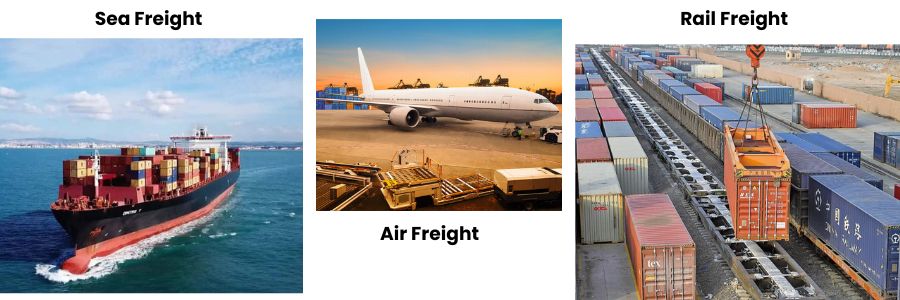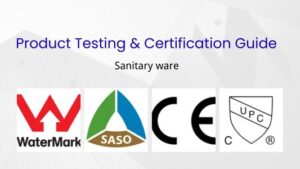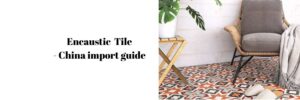As a leading ceramic and porcelain tile supplier in China, I’ve helped countless international clients navigate the complex process of shipping tiles from China to markets worldwide. The journey from our factories to your warehouse involves many moving parts, but with proper planning, you can avoid costly mistakes and delays.
China remains the world’s largest producer of ceramic tiles, offering unmatched variety, quality, and pricing. However, the success of your tile import business depends heavily on mastering the logistics. In this comprehensive guide, I’ll walk you through everything you need to know about importing tiles from our factories to your location.
By the end of this article, you’ll understand the key considerations for efficient tile shipping, how to reduce costs, prevent damage, and navigate customs procedures. Let’s begin this journey together!
Understanding the basics of tile shipping from China
Before diving into logistics details, let’s cover some fundamentals about shipping tiles from China.
Types of Chinese tiles available for export
China produces two main categories of tiles:
- Ceramic tiles: Lighter, less dense, and typically less expensive. Great for wall applications and areas with light foot traffic.
- Porcelain tiles: Heavier, denser, and more durable. Perfect for floor applications and high-traffic areas.
“The type of tile and their specification you select directly impacts your shipping costs and logistics requirements. Both ceramic tiles or porcelain tiles require strong packaging and careful handling due to their fragile.”
If you want to know more about ceramic vs porcelain tile, please read our previous post for more details.


Standard shipping methods
When shipping tiles from China, you have several options:
- Sea freight: The most common and cost-effective method for bulk shipments. Typical transit times range from 7-45 days depending on destination.
- Air freight: Much faster (3-7 days) but significantly more expensive. Usually only viable for samples or urgent small orders.
- Rail freight: A middle-ground option for destinations in Europe and Central Asia via the Belt and Road routes (usually need 30-80 days).
Most tile importers choose sea freight due to the heavy weight and relatively low value-to-weight ratio of ceramic products.


Planning your tile import: pre-shipping considerations
Successful tile importing starts long before your products leave our Chinese factories.
Choosing the right supplier
Working with a reputable supplier like us at Tiles & Bathroom ensures your products meet quality standards and shipping regulations. Here’s what to look for:
- Manufacturing capabilities: Factory size and production capacity.
- Export experience: Track record of international shipping.
- Quality certifications: ISO, CE, or other standards.
- Communication skills: Ability to address concerns promptly.
Quality control measures
Never skip quality inspection! I strongly recommend:
- Pre-production samples: Approve before mass production.
- During-production inspection: Check work in progress.
- Pre-shipment inspection: Final verification before loading.
These steps help avoid the nightmare of receiving damaged or substandard tiles after waiting weeks for delivery.
Documentation preparation
Proper paperwork prevents customs delays. Essential documents include:
- Commercial Invoice
- Packing List
- Bill of Lading
- Certificate of Origin
- Product test reports/certifications or inspection certifications
Container loading tiles: best practices
The way your tiles are loaded into containers directly affects both shipping costs and product safety. Let’s explore the best practices for container loading tiles.
Container Types for Tile Shipping
Different containers suit different shipping needs:
| Container Type | Dimensions | Best For |
|---|---|---|
| 20′ GP (most common choice) | 5.9m × 2.35m × 2.39m | Most normal size tiles, heavy tiles |
| 40′ GP | 12.03m × 2.35m × 2.39m | Large format tiles, larger orders, mixed Lightweight but bulky products |
| 40′ HQ | 12.03m × 2.35m × 2.7m | Maximum volume, taller packaging |
Bold fact: A 20′ container can typically hold 800-1,400 sqm of porcelain tiles, depending on tile thickness, size, packaging and the container weight can loaded (This is related to the port weight limit of the destination port).
Proper loading techniques
Proper container loading tiles involves careful planning:
- Position heavier boxes or bigger sizes at the bottom.
- Distribute weight evenly across the container floor.
- Load packages tightly to minimize movement.
- Use appropriate bracing methods.
Securing tiles to prevent movement
Movement during transit is the enemy of fragile ceramic products. To prevent damage:
- Use airbags to fill gaps between pallets.
- Apply corner protectors to pallets.
- Secure loads with strapping bands.
- Consider wooden bracing for extra stability.


Tile shipping costs: breaking down the expenses
Understanding tile shipping costs helps you budget accurately and identify savings opportunities.
Factors affecting shipping costs
Several factors influence how much you’ll pay:
- Distance: Longer routes cost more.
- Shipping volume: Larger shipments have better rates per unit.
- Tile weight and density: Heavier products cost more to ship.
- Time of year: Peak seasons have higher rates. Especially before holidays, such as Chinese New Year, National Day and Christmas.
- Fuel surcharges: Vary based on global oil prices.
- Currency exchange rates: Affect final cost in your local currency.
FCL vs. LCL shipping methods
When shipping tiles from China, you have two main options:
Full Container Load (FCL)
FCL means you’re using the entire container exclusively for your shipment. Benefits include:
- Lower cost per unit for full container quantities
- Greater security since only your goods are in the container
- Less handling which reduces damage risk
- Faster transit times with fewer stops and transfers
However, FCL requires enough volume or weight to fill a container. For ceramic and porcelain tiles, this typically means:
- 20′ container: Orders of approximately 800-1,400 sqm.
Less than Container Load (LCL)
LCL allows you to ship smaller quantities by sharing container space with other importers.
Advantages of LCL include:
- Lower upfront cost for smaller orders
- Flexibility to import without minimum quantity requirements
- Ability to test new products without major investment
Disadvantages include:
- Higher cost per square meter
- Increased handling and potential for damage
- Longer transit times due to consolidation and deconsolidation
- More complex paperwork
Cost Comparison
For a practical example, consider shipping 300 sqm of porcelain tiles from China to the USA:
- LCL: Approximately $1,800-$2,200 ($6-7/sqm)
- FCL (20′ container, 1000 sqm): Approximately $3,500-$4,000 ($3.5-4/sqm)
The per-unit savings with FCL are significant, but you need the volume to justify it.
Hidden fees to watch out for
Beware of additional costs that may not appear in initial quotes:
- Terminal handling charges (THC)
- Documentation fees
- Customs examination fees
- Demurrage and detention charges
- Port congestion surcharges
- Insurance premiums
Always ask for a comprehensive quote that includes all potential charges.
Tips for Reducing Shipping Expenses
Smart importers use these strategies to minimize tile shipping costs:
- Order in FCL quantities when possible
- Consolidate orders from multiple suppliers
- Book in advance during peak seasons
- Compare quotes from multiple freight forwarders
- Optimize packaging dimensions or weight to maximize container space
- Consider different ports of entry for potentially lower costs
Preventing tile damage during shipping
Damage prevention is critical when shipping tiles from China. The long journey presents many risks, but proper preparation minimizes losses.
Packaging requirements
Different tiles require different packaging approaches:
- Ceramic and Porcelain tiles: Need strong cartons, additional corner protection or wooden pallet.
- Mosaic tiles: Benefit from additional cushioning materials.
- Large format tiles: Often need metal or wooden crates for safe transport.
Insurance options
Despite best efforts, damage sometimes occurs. Insurance options include:
- Basic carrier liability: Minimal coverage provided by default.
- All-risk cargo insurance: Comprehensive protection against most damages.
- Named perils insurance: Coverage for specific risks only.
I always recommend comprehensive insurance for valuable tile shipments.
Customs clearance for tiles: navigating import regulations
Customs clearance for tiles can be complex, but understanding the process helps avoid delays.
Required documentation
Prepare these documents for smooth customs processing:
- Commercial Invoice: Shows transaction value
- Packing List: Details contents and quantities
- Bill of Lading: Transport contract with carrier
- Certificate of Origin: Verifies manufacturing country
- Safety Certifications or inspection certifications: Varies by destination country
- Import License: Required in some countries
Understanding tariffs and duties
Ceramic and porcelain tiles face different tariff rates depending on:
- Country of origin (China)
- Destination country import policies
- Tile classification (HS code typically 6907 or 6908)
- Special trade agreements between countries
Research these costs in advance to avoid budget surprises.
Compliance with standards
Many countries regulate building materials like tiles. Common standards include:
- Slip resistance ratings
- Water absorption limits
- Lead and cadmium content restrictions
- Radiation testing for certain materials
Ensure your Chinese supplier provides necessary test reports.
Working with customs brokers
A skilled customs broker helps navigate complex import procedures by:
- Preparing and submitting proper documentation
- Calculating correct duties and taxes
- Addressing any customs inquiries
- Arranging inspections when required
- Securing timely release of your shipment
Receiving your shipment: post-arrival procedures
Your responsibilities don’t end when tiles arrive at port. Proper receiving procedures include:
Inspection protocols
Always conduct thorough inspection:
- Count packages against packing list
- Check for external damage to packaging
- Open random boxes to verify contents
- Document any issues with photographs
- Test samples for quality assurance
Handling damaged goods claims
If you discover damage:
- Document evidence immediately
- Notify carrier and supplier within time limits
- Submit formal claims with supporting documentation
- Understand your insurance coverage
Warehousing considerations
Ceramic tiles require proper storage:
- Store on level surfaces
- Maintain consistent temperature and humidity
- Stack boxes according to manufacturer guidelines
- Organize by lot numbers to ensure color consistency, make sure same model in the same shade stack together.
Conclusion: your path to successful tile importing
Shipping tiles from China requires careful planning and attention to detail, but the rewards are substantial. By understanding container options, optimizing shipping costs, preventing damage, and navigating customs requirements, you’ll create a smooth supply chain for your business.
As your partner in the Chinese tile industry, we at Tiles & Bathroom offer not just quality products but also logistics expertise. Our team can help guide you through every step of the importing process.
Ready to start your tile import journey? Contact us today for a personalized consultation and discover why so many international businesses trust us as their Chinese tile supplier.
FAQ: common questions about shipping tiles from China
Q: How long does shipping take from China to the USA?
A: Typically 30-45 days for sea freight, depending on the specific ports and any potential delays.
Q: What’s the minimum order quantity for tiles from China?
A: For LCL shipments, you can order as little as 200-300 sqm. For FCL, you’ll need 800+ sqm to make it economical.
Q: How do I know if my tiles meet my country’s import standards?
A: Request test reports from your supplier and consult with a customs broker familiar with building material imports.
Q: Is it better to use a freight forwarder or handle shipping myself?
A: For most importers, using an experienced freight forwarder saves time and prevents costly mistakes.
Q: How can I verify the quality of tiles before shipping?
A: Always request samples before ordering, and consider hiring a third-party inspection company for pre-shipment verification.



